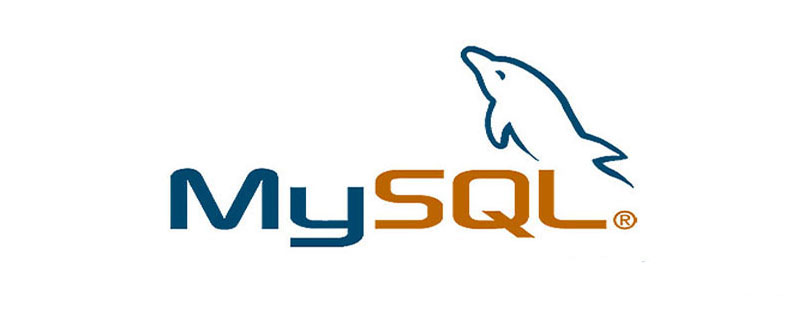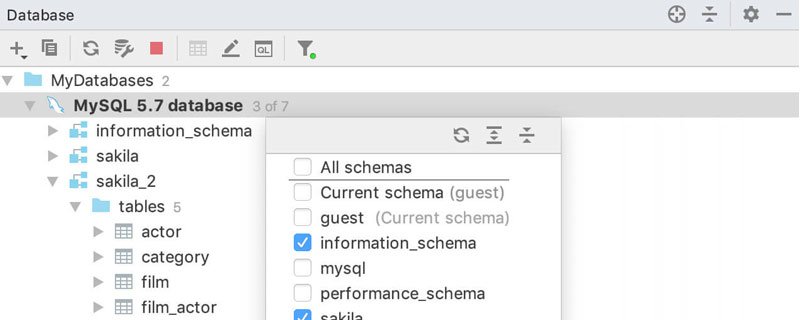Found a total of 53 related content

The difference between InnoDB and MyISAM in MySQL
Article Introduction:The difference between InnoDB and MyISAM in MySQL: 1. InnoDB has transactions; 2. Innodb does not support full-text indexes; 3. MyISAM supports table-level locking, and InnoDB supports row-level locking; 4. InnoDB uses clustered indexes, while MyISAM uses non-clustered indexes. So.
2020-06-04comment 02547

what is innodb
Article Introduction:innodb is one of the database engines of mysql. It is now the default storage engine of mysql and one of the standards for binary release by mysql AB. The innodb storage engine is fully integrated with the MySQL server. The innodb storage engine maintains its own buffer pool for caching data and indexes in main memory.
2020-06-28comment 06289

The difference between innodb and myisam in mysql
Article Introduction:The main differences between the InnoDB and MyISAM storage engines in MySQL are as follows: Transaction support: InnoDB supports transactions, but MyISAM does not. Row locking: InnoDB uses row locking and MyISAM uses table locking. Foreign key constraints: InnoDB supports foreign key constraints, but MyISAM does not.
2024-04-27comment 0246

what is mysql innodb
Article Introduction:InnoDB is one of the database engines of MySQL. It is now the default storage engine of MySQL and one of the standards for binary releases by MySQL AB. InnoDB adopts a dual-track authorization system, one is GPL authorization and the other is proprietary software authorization. InnoDB is the preferred engine for transactional databases and supports transaction security tables (ACID); InnoDB supports row-level locks, which can support concurrency to the greatest extent. Row-level locks are implemented by the storage engine layer.
2023-04-14comment 01481

Features of InnoDB storage engine
Article Introduction:Features of the InnoDB storage engine: 1. Supports transaction operations and has transaction ACID isolation features; 2. InnoDB supports foreign key operations; 3. InnoDB’s default lock granularity row-level locks have better concurrency performance; 4. InnoDB has secure log files .
2020-06-20comment 04487

When to use MyISAM vs. InnoDB?
Article Introduction:InnoDB is a general-purpose storage engine that balances high reliability and performance. Starting with MySQL 5.6, InnoDB is the default storage engine for MySQL. InnoDB can be used for multiple purposes. Here are some of them - It can be used for transactional purposes i.e. all ACID properties. InnoDB can be used for row-level locking, which means it provides higher performance compared to MyISAM. InnoDB can be used for large buffer pools of data and indexes. InnoDB can be used when we need better performance than MyISAM. MyISAM is the default storage engine of the MySQL relational database management system before version 5.5. MyISAM can also be used for various types of purposes. MyISAMeasy
2023-09-02comment 0379

What is the difference between MyISAM and InnoDB in mysql
Article Introduction:Differences: 1. InnoDB supports transactions, but MyISAM does not; 2. InnoDB supports foreign keys, but MyISAM does not; 3. InnoDB is a clustered index, while MyISAM is a non-clustered index; 4. Innodb does not support full-text indexes, but MyISAM supports full-text indexes. ; 5. InnoDB supports table and row-level locks, while MyISAM supports table-level locks; 6. InnoDB tables must have unique indexes, but Myisam does not need them; 7. The storage files are different.
2022-11-08comment 025826

What is the difference between innodb and myisam in mysql?
Article Introduction:Differences: 1. MyISAM does not support transactions, but InnoDB does. 2. InnoDB supports data row locking, while MyISAM does not support row locking and only supports locking the entire table. 3. InnoDB supports foreign keys, but MyISAM does not. 4. The primary key range of InnoDB is larger, up to 2 times that of MyISAM.
2020-07-25comment 03622

What is InnoDB row storage format
Article Introduction:In earlier InnoDB versions, since there was only one file format, there was no need to name this file format. As the InnoDB engine evolves, new file formats that are incompatible with earlier versions are developed to support new features. Today we will introduce the InnoDB row storage format.
2021-07-09comment 01623

How to change the storage engine of mysql to innodb
Article Introduction:Two modification methods: 1. Use the SET statement to temporarily modify the default storage engine. The syntax is "SET default_storage_engine=innodb;". When the client is restarted, it will be restored to the original engine type. 2. Use the ALTER TABLE statement to modify the syntax "ALTER TABLE table name ENGINE=innodb;" to modify the engine type of the specified table to innodb.
2022-06-21comment 05343

InnoDB 性能调优 – 优化 MySQL 数据库的关键 InnoDB 变量
Article Introduction:InnoDB是MySQL的核心存储引擎,即使在最具挑战性的生产环境中也以其可靠性和性能而闻名。要真正优化InnoDB,您需要深入了解各种系统变量以及它们如何与您独特的服务器设置以及工作负载的特定需求交互。如果正确配置这些设置,即使在重负载下,您也可以大大减少延迟、提高吞吐量并保持稳定性。无论您正在运行繁忙的Web应用程序、大型数据仓库还是敏捷的企业应用程序,此处分享的见解和指南都将帮助您优化数据库,使其平稳高效地运行!1.innodb_buffer_pool_size也许是InnoDB性能调优最关键的设置
2024-07-10comment683

How to choose a MySQL storage engine: InnoDB or MyISAM?
Article Introduction:How to choose a MySQL storage engine: InnoDB or MyISAM? Overview: When using a MySQL database, we need to choose a storage engine that suits our needs. MySQL provides a variety of storage engines, the most commonly used of which are InnoDB and MyISAM. This article will introduce the characteristics of these two storage engines and how to make the right choice in practical applications. Comparison between InnoDB and MyISAM 1.1 The characteristics of InnoDB support transaction processing: InnoDB is MyISAM
2023-07-25comment 01161

Comparative analysis of InnoDB and MyISAM in MySQL
Article Introduction:Comparing InnoDB and MyISAM1, storage structure MyISAM: Each MyISAM is stored as three files on the disk. They are: table definition files, data files, and index files. The name of the first file begins with the name of the table, and the extension indicates the file type. .frm files store table definitions. The extension of the data file is .MYD (MYData). The extension of the index file is .MYI (MYIndex). InnoDB: All tables are stored in the same data file (or multiple files, or independent table space files). The size of the InnoDB table is only limited by the size of the operating system file, which is generally 2GB. 2. Storage space MyISAM: MyISAM supports
2023-06-02comment 01132

MySQL storage engine detailed explanation of InnoDB architecture
Article Introduction:This article brings you relevant knowledge about mysql, which mainly introduces the relevant content about the storage engine InnoDB architecture. InnoDB is the default engine of MySQL, a storage engine that supports transaction security. Let’s take a look at it together. I hope it will be helpful to you. Everyone is helpful.
2022-10-10comment 01829

An in-depth discussion of the locking mechanism of the MySQL InnoDB engine
Article Introduction:In-depth analysis of MySQLInnoDB locks In the MySQL database, locks are an important mechanism to ensure data integrity and consistency. As one of the most commonly used storage engines in MySQL, the InnoDB storage engine has attracted much attention for its locking mechanism. This article will provide an in-depth analysis of the locking mechanism of the InnoDB storage engine, including lock types, locking rules, deadlock handling, etc., and provide specific code examples to help readers better understand. 1. Types of locks In the InnoDB storage engine, locks are mainly divided into shared locks
2023-12-21comment 0907

Optimization tips and best practices for MySQL InnoDB engine
Article Introduction:Optimization skills and best practices of MySQLInnoDB engine Introduction: MySQL is one of the most popular open source relational database management systems, and the InnoDB engine is the default storage engine of MySQL. In most cases, optimizing your database is key to improving performance. This article will introduce some tips and best practices for optimizing the InnoDB engine, and provide relevant code examples. 1. Choose the appropriate storage engine MySQL provides a variety of storage engines, including InnoDB, MyISAM
2023-07-25comment 01229

MySQL storage engine selection comparison: InnoDB, MyISAM and Memory performance index evaluation
Article Introduction:MySQL storage engine selection comparison: InnoDB, MyISAM and Memory performance index evaluation Introduction: In the MySQL database, the choice of storage engine plays a vital role in system performance and data integrity. MySQL provides a variety of storage engines, the most commonly used engines include InnoDB, MyISAM and Memory. This article will evaluate the performance indicators of these three storage engines and compare them through code examples. 1. InnoDB engine InnoDB is My
2023-07-26comment 0412

How MySQL sees InnoDB row format from binary content
Article Introduction:InnoDB is a storage engine that stores data in tables on disk, so our data will still exist even after shutdown and restart. The actual process of processing data occurs in memory, so the data in the disk needs to be loaded into the memory. If it is processing a write or modification request, the contents in the memory also need to be refreshed to the disk. And we know that the speed of reading and writing to disk is very slow, which is several orders of magnitude different from reading and writing in memory. So when we want to get certain records from the table, does the InnoDB storage engine need to read the records from the disk one by one? The method adopted by InnoDB is to divide the data into several pages, and use pages as the basic unit of interaction between disk and memory. The size of a page in InnoDB is generally 16
2023-06-03comment 0949


















